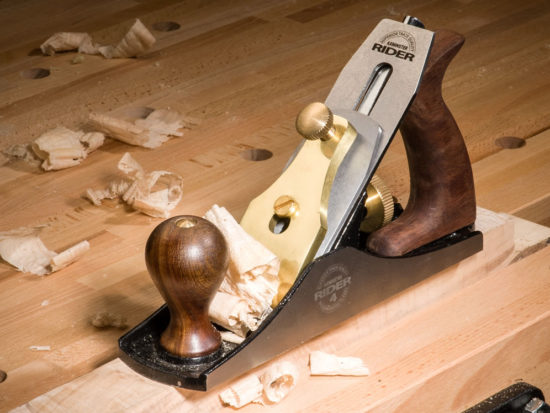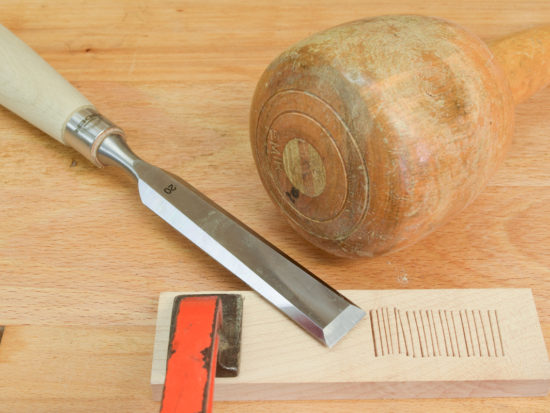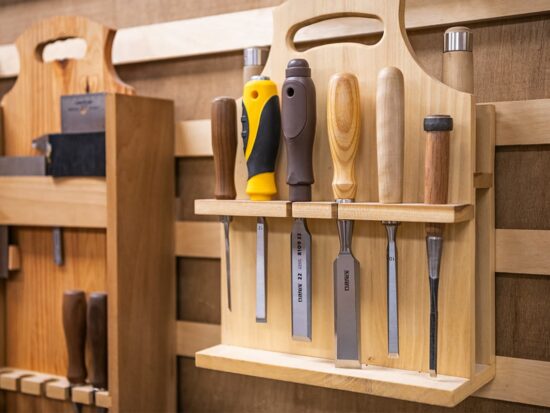Introducing the wider Rider range
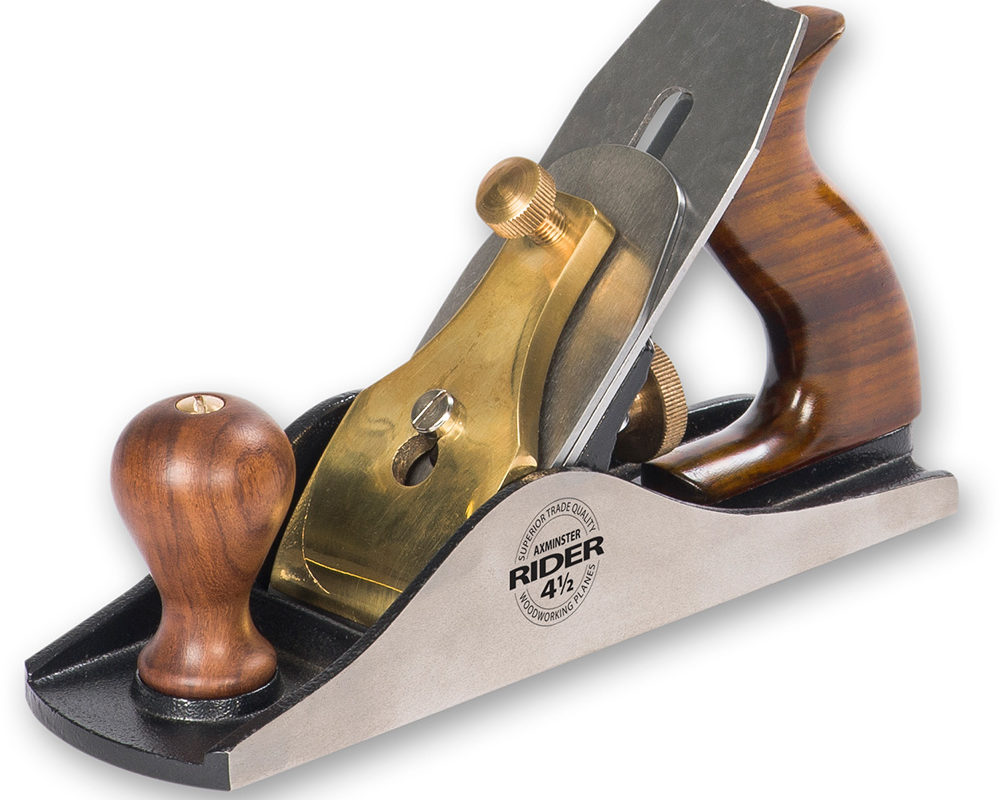
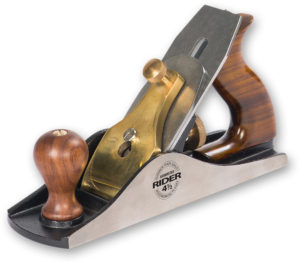
A plane of some description is one of those tools which lurks, rusty and unloved in the dark recesses of many a garden shed or toolbox and for many homeowners or DIYers, most of the time, just one will suffice. It’s usually an old, paint bespeckled, battered No.4 or 5 used for taking a few shavings off the bottom of a sticking door.
Once you start to take an interest in wood and begin to make stuff, planes take on a whole new significance as without them, nothing much happens. Should you decide to work with just hand tools (and many do), the battered and bespeckled No.4 will need to be replaced with a whole army of different planes. All professional ‘shops and most amateur woodworkers will have some machinery to dispense with the sheer ‘grunt’ of preparing timber and so only a few are actually essential.
Even though I’ve got a comprehensive collection of decent quality machinery, for some strange and inexplicable reason, the planes under the bench haven’t been consigned to the scrap heap, even though there are only few that get used on a regular basis. At the last count there were 33 under or around the workbench and the number shows no sign of decreasing as Veritas have just brought out a very nifty little plane kit which has piqued my interest, so there’ll definitely be another one to shoehorn under the bench later on.
The acquisition of a set of planes, particularly if you’re a newcomer to woodwork, can make a very hefty dent in the wallet. It’s well worth doing some research and where possible ‘try before you buy’ or at least examine at first hand some different types of planes.
One such possibility would be the new Rider range of bench and specialist planes. The current selection of Rider block planes has been extended so that the whole range now consists of 19 bench and specialist planes. There’s a No.4, 4½, 5, 6 and a large No.7 with a 5½ to be added at a later date. Each is made from age conditioned, high quality ductile cast iron and the soles have been ground flat to within +/- 1.6 thou" or or 0.04mm with oil finished, sustainably sourced Indian rosewood handles. The blades are now a full 3mm thick and made from oil quenched, EN42 high carbon spring steel, hardened and tempered to RC 63. The cap iron and other fittings made from solid brass.
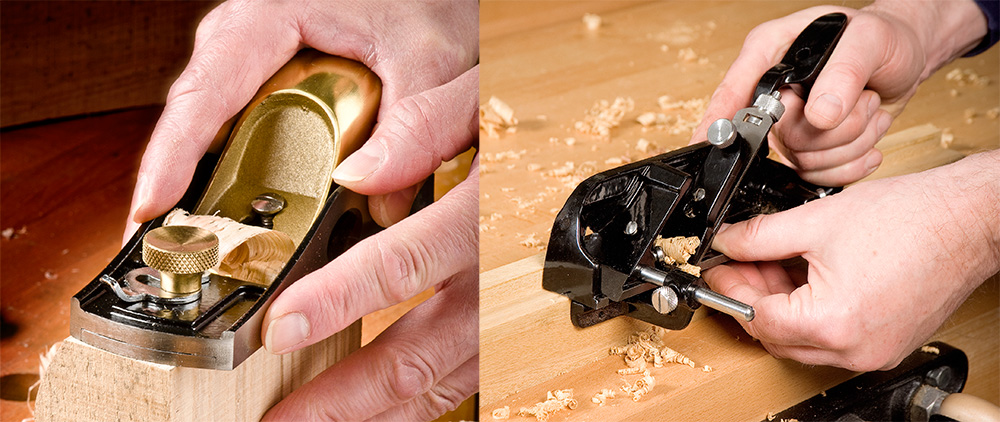
As well as the bench planes, there’ll be some new specialist planes, including a rather nice 2-in-1 bull nose and a 3-in-1 shoulder plane, plus a traditional pattern No.778 rebate plane. Every Rider plane will be cleaned and checked at Axminster, during which time it’ll be laser etched, then re-packaged in a very smart, high quality, foam lined, black embossed box, complete with (depending on the plane) a sock and spare blade. Blades are already honed, so that with the bare minimum of setting up, every plane is ready to start taking shavings the moment it’s taken out of the box.
All planes, though, will have a comprehensive instruction booklet tucked inside the box, which amongst a lot of other information, gives some useful hints on sharpening the blade once the edge has been lost.
Honing is always a ticklish area to discuss and can raise all sorts of hackles amongst woodworkers but we have attempted to simplify the whole process by including a Rider honing guide in the range, based on the original Eclipse design. Honing guides are useful as they allow a repeat honing angle to be replicated exactly, but only if the blade projects the same distance each time. The best way to achieve this projection is to use a sharpening board which looks rather like a little bench hook and unsurprisingly, one of these is also part of the Rider range.
Last and by no means least, you’ve got to have something to sharpen the blade on, so we’ve included a decent diamond (1000/400g) honing stone as well. I used these stones for many years and for all practical purposes, they’re 100% bullet proof. All that’s required is a squirt of lubricant of some sort (I used paraffin or WD40, but anything will do) and you’re in business.
I’ve had a very tiny input into the development of the bench planes and had the prototype No.4½ in my workshop at home for some time. I was quite impressed and to mention an oft quoted expression these days, ‘it does what it says on the tin’.



